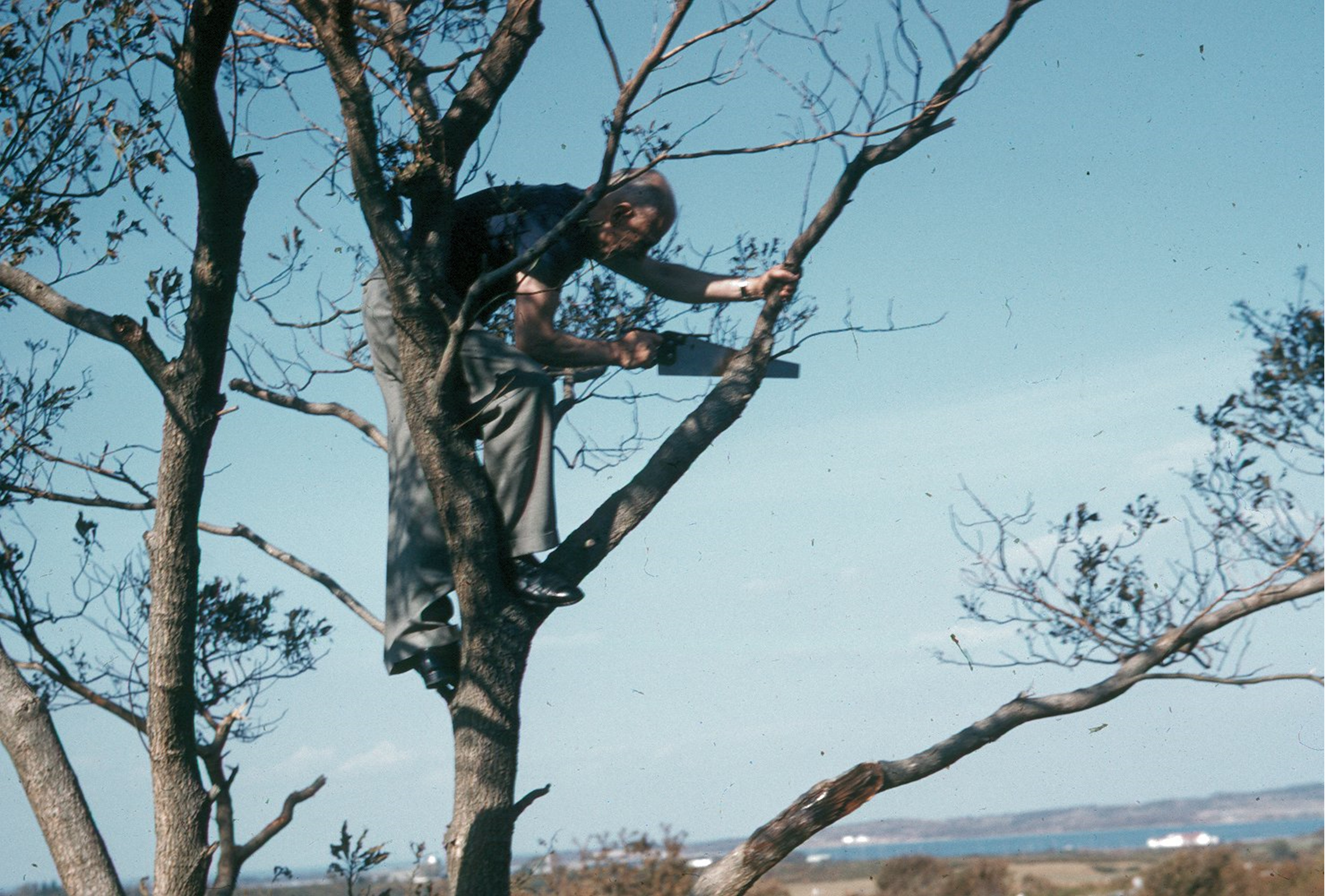
This photograph, from the Montauk Library’s Harry Bruno Collection, is labeled “Doolittle up a tree, Montauk, Sept. 1954.” Doolittle refers to General James H. Doolittle, a “fearless pilot [who] repeatedly risked his life to test the flight characteristics and limitations of experimental aircraft,” according to an article in Air & Space Forces magazine.
As a racing, transcontinental, stunt, and test pilot as well as an aeronautical engineer, Doolittle was a pioneer in flying blind, or “under the hood,” in unfavorable weather. As an executive at the Shell Oil Company, he promoted higher-octane fuels to accommodate more powerful engines, which helped the Allies win World War II. He also planned a surprise attack on Japan, launching planes from an aircraft carrier and thus decimating the enemy’s morale, which earned him a Medal of Honor from Franklin Roosevelt.
As his situation in the tree in Montauk might suggest, Doolittle was known as a “master of the calculated risk.” He won an aerobatic race in Chile despite two broken ankles he’d acquired performing acrobatic feats after cocktails to impress his hosts. Three times he landed by parachute after bailing from a plane.
“I’ve always tried to do something new, but before exhibiting that new thing to the public, I practiced it again and again to be sure the hazard was minimized as much as possible,” he was quoted as saying. “My calculations didn’t always work out precisely. Otherwise, I wouldn’t have had to jump out of an airplane three times to save my neck.”
Doolittle and his wife, Joe, were frequent guests of Harry Bruno and his wife, Nydia, at Green Chimneys, their home in Montauk. Bruno, too, was a pioneer aviator, as well as a PR man who counted among his clients Charles Lindbergh, the Standard Oil Company, Admiral Richard E. Byrd, the Packard Motor Car Company, and – what drew him to Montauk – Carl Fisher, who was promoting Montauk as a playground for the rich.


Montauk was doubtless a playground for the Brunos and their many guests, including the Doolittles. Both Brunos enjoyed fishing and hunting, flying, sightseeing, horseback riding, visiting the Surf Club and the ocean beach, and tooling around Montauk in classic cars. Green Chimneys, with its lush gardens and water views, was affectionately known to their friends as “Bruno’s Bistro.”




Slides in the Harry Bruno Collection generally show the Brunos and their guests having fun from the 1940s through 1954 – doing so much recreating, in fact, that the images to some degree reflect the materials that Carl Fisher used to promote Montauk in the 1920s and ‘30s. The Brunos’ images shine light on the fashions, planes and automobiles, and architecture and landscape of their own period – although they do little to explain why General Doolittle decided to climb a tree with a saw in his hand.

Reply or Comment